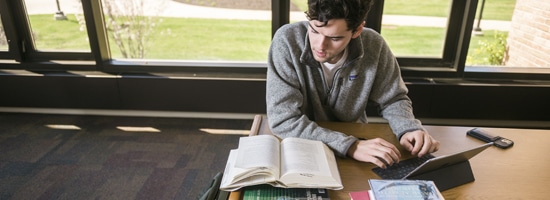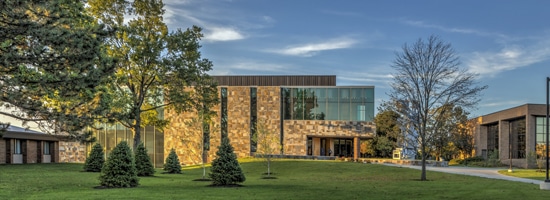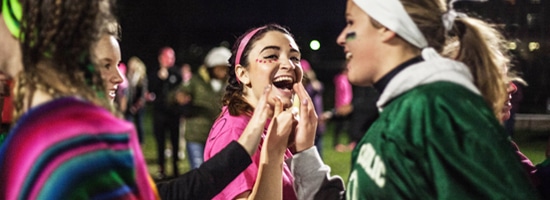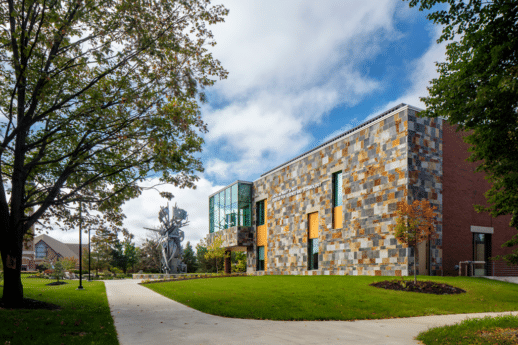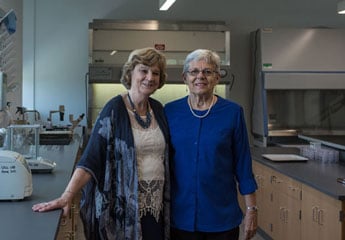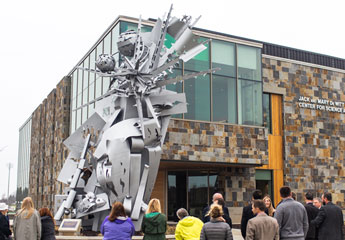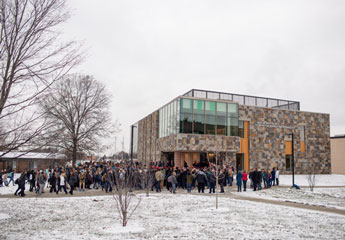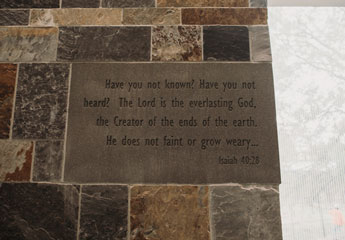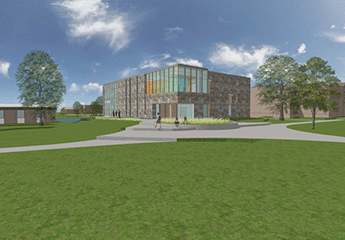Digital Dissection Table Is a Practical Study Tool on Cornerstone's Campus
Imagine a dissection table that displays a human muscular structure one moment and a diagram of the cardiovascular system the next—all with the tap of a screen.
Cornerstone University undergraduate students are experiencing this innovative technology at the Jack and Mary De Witt Center for Science and Technology. The Anatomage Table, a digital dissection table, was introduced to campus with the opening of the De Witt center. The table is a new way to interact with the intricacies of the human body. In addition to gross anatomy—the study of internal and external organs visible to the human eye—of four individuals obtained through digitizing scans of four people, the table can display twenty high-resolution local anatomies (e.g., the heart) and several hundred examples of various pathological impacts on healthy anatomy.
Riley Costen (B.S. ’21) is a pre-med student at Cornerstone and a teacher’s assistant in the Kinesiology, Science, Engineering and Mathematics Division. He was one of the first students to be trained on the Anatomage Table and later helped other students interact with it as well.
“It’s a lot more hands-on,” Costen said. “You can see and know what’s going on inside the body. It also takes away some of the anxiety people have about dissection and cadavers.”
The table, according to Costen, is more than just a digitized cadaver. Students can also access case studies, such as broken bones or cancers, inspect cells and dissect specific organs. The table features programs for animal biology and pediatrics as well.
This sort of technology is not often offered to undergraduate students. At least five other schools in the state of Michigan have a digital dissection table, and the tables are typically only accessible to graduate students. Undergraduates at CU can utilize the table whether they are biology students or merely taking biology as a science elective.
“It’s amazing how much it can do,” Costen said. “A lot of students have told me it’s the best study tool for anatomy exams.” Costen’s favorite aspect of the table is the multiple case studies where students can look at specific diseases and figure out what it’s doing to the body.
Costen plans to go to medical school after he graduates from Cornerstone, and he considers the table a valuable aspect of his education. “The table plays into my love of the intricacies of the human body,” Costen said. “It’s amazing to be able to pull back the superficial layers and see what’s going on inside the body and learn how I can help when things go wrong.”
Tour De Witt Science Center
The Jack and Mary De Witt Center for Science and Technology inspires students to enter STEM fields while holding steadfast to uncompromising Christian values. Watch the video below for a tour of this state-of-the-art science facility.
